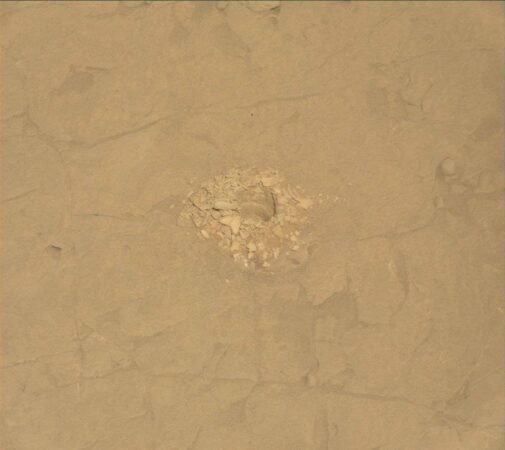Summary Points
-
Exploration Continues: Curiosity’s Altadena drill campaign focuses on Martian bedrock, analyzing drill hole characteristics and tailings to understand Mars’ ancient environment and climate.
-
Sample Analysis: The rover delivered powdered rock samples to the CheMin and SAM instruments, marking a significant step in characterizing the diverse geology of Mars over the past 12 years.
-
Advanced Imaging: Coordinated observations using ChemCam, Mastcam, APXS, and MAHLI aim to image and analyze the drill hole walls, surrounding boxwork structures, and distant geological features.
- Environmental Monitoring: The mission includes atmospheric measurements and a dust-devil survey to investigate Martian weather patterns and atmospheric properties.
Curiosity Blog: Sols 4568-4569 Explores Altadena Drill Hole and Tailings
Earth Planning Date: Wednesday, June 11, 2025
NASA’s Curiosity rover presses on in its journey through Mars’ Mount Sharp, focusing on the Altadena drill site. Recently, Curiosity delivered a powdered rock sample to the CheMin and SAM instruments for analysis. Now, researchers are turning their attention to the drill hole and the material expelled during drilling, known as tailings.
The drill hole’s color shows variations with depth, revealing different mineral compositions. Meanwhile, the tailings consist of both fine powder and coarser clumps. This diversity allows scientists to appreciate the range of geological features Curiosity has encountered over 12 years, marking each drill as a glimpse into Mars’ environmental history.
For sols 4568 and 4569, Curiosity’s array of instruments, including ChemCam, Mastcam, APXS, and MAHLI, worked together. They conducted detailed imaging and chemical analysis of the drill hole and surrounding tailings before moving on to new locations. Such interdisciplinary collaboration exemplifies the technological advancements that NASA has made in space exploration.
Additionally, Mastcam captured stereo mosaics of nearby boxwork structures, shedding light on Martian geology. ChemCam gathered long-distance images to understand the layers of Mishe Mokwa hill and even the distant crater rim. These observations enhance our understanding of Mars’ atmosphere, including a survey for dust devils.
Curiosity’s findings contribute not only to our knowledge of Martian history but also to developing technologies for future missions. By studying conditions on another planet, scientists gain insights that may improve life on Earth. Each discovery fosters innovation, inspiring advancements in robotics, materials science, and environmental monitoring.
Overall, Curiosity’s journey provides a wealth of information that enhances our understanding of both Mars and our own planet. As the rover continues its mission, it solidifies its role as a bridge between planetary science and technological progress.
Expand Your Tech Knowledge
Explore the future of technology with our detailed insights on Artificial Intelligence.
Discover archived knowledge and digital history on the Internet Archive.
SciV1

